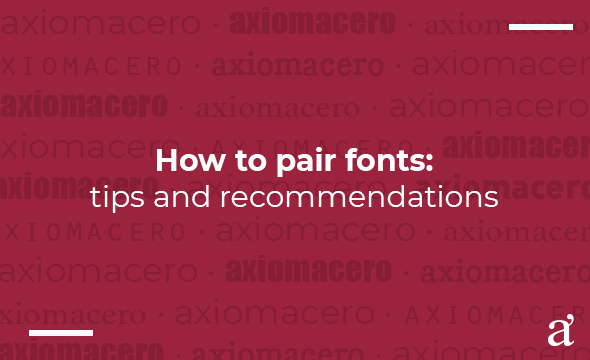How to pair fonts: tips and recommendations

The perfect font combination can turn plain designs into delightful creations
If you think learning how to combine fonts is a skill needed only by graphic designers, think again. Having a great font pairing is essential for a great design: whether it’s a presentation, a document, a web page or a poster. Deciding what fonts would look best together can make the difference between a boring, lifeless design and a compelling, attractive one.
Still unsure about how important fonts are? How many times have you changed the default font for your projects? Fonts matter in the overall visual impact of your design and communicates a particular message. Choosing great font combinations and sizes can seem like a difficult task, but it’s not impossible.
In order to help you improve the quality of your designs, we have a guide to pairing fonts that will allow you to save time while designing!
Font combination tips
Assign roles for specific fonts
It is important to remember that consistency is crucial for a professional design. This can be achieved by assigning a role to the fonts used. For instance, use the same font for titles, another for subtitles, and another for body text. By assigning roles to specific fonts your design will look much more cleaner and will be easier to read and understand.
Avoid similar classifications
Alongside with the previous recommendation, another way to make an easy to read design is by avoiding fonts from the same categories, for instance, script and slabs. By using similar fonts, you won’t get enough contrast and will likely be unappealing and hard to read. Combining different classifications is a seemingly insignificant change but makes a huge difference that entices the viewer to read the text.
Create contrast
-
Size
A vivid way to create contrast is by creating enough difference in point size between the selected fonts. For example, using a 36 point font for the header and an 18 point font for the body copy. This size contrast creates a visual hierarchy and makes it easier for your reader to distinguish what is most important and the order of how to read.
-
Weight
Another way to create visual hierarchy is by varying font weights, with clear differences in the boldness of the fonts used. The key to achieving weight contrast is to mix a neutral or light font with a font that is pretty notorious.
Moods
Every font portrays a different personality and mood. Try not to mix fonts that don’t go together according to their different moods. For example, don’t pair a bold and block font with a playful, simplistic and childlike font. While contrast is always a good thing, be careful to steer clear of discord, since this can cause a confusing message.
Stick with two or three fonts
Finding the perfect font combination still might be confusing. Instead of overthinking it, stick to two or three combinations, and keep it simple. A classic typeface combination you can use is a classic sans serif and serif combination. This way you’re certain that your design has contrast, easy to read and not overwhelming.
Use the same font family
Don’t forget that using only one font family can save you a lot of time and produce an elegant look. You might choose Helvetica Black for a header and Helvetica normal for your body. By working this way, we must remember to create contrast with size and weight. Since both fonts used are from the same family, they create a nice visual harmony.
Designers, and even non designers, mix and pair fonts on the daily, and inspiration can often run dry. These tips and tricks are sure to help you during your creative process to make better and more captivating designs. There are many viable options and roads you can take while designing, these are just some of our recommendations to help you avoid mistakes. Once you feel comfortable, jump in and begin experimenting with the craziest combinations.
At Axiomacero we excel at creating effective branding, make sure to check out our Instagram, where we share our projects, or our blogs where we share valuable information on how to grow your brand!